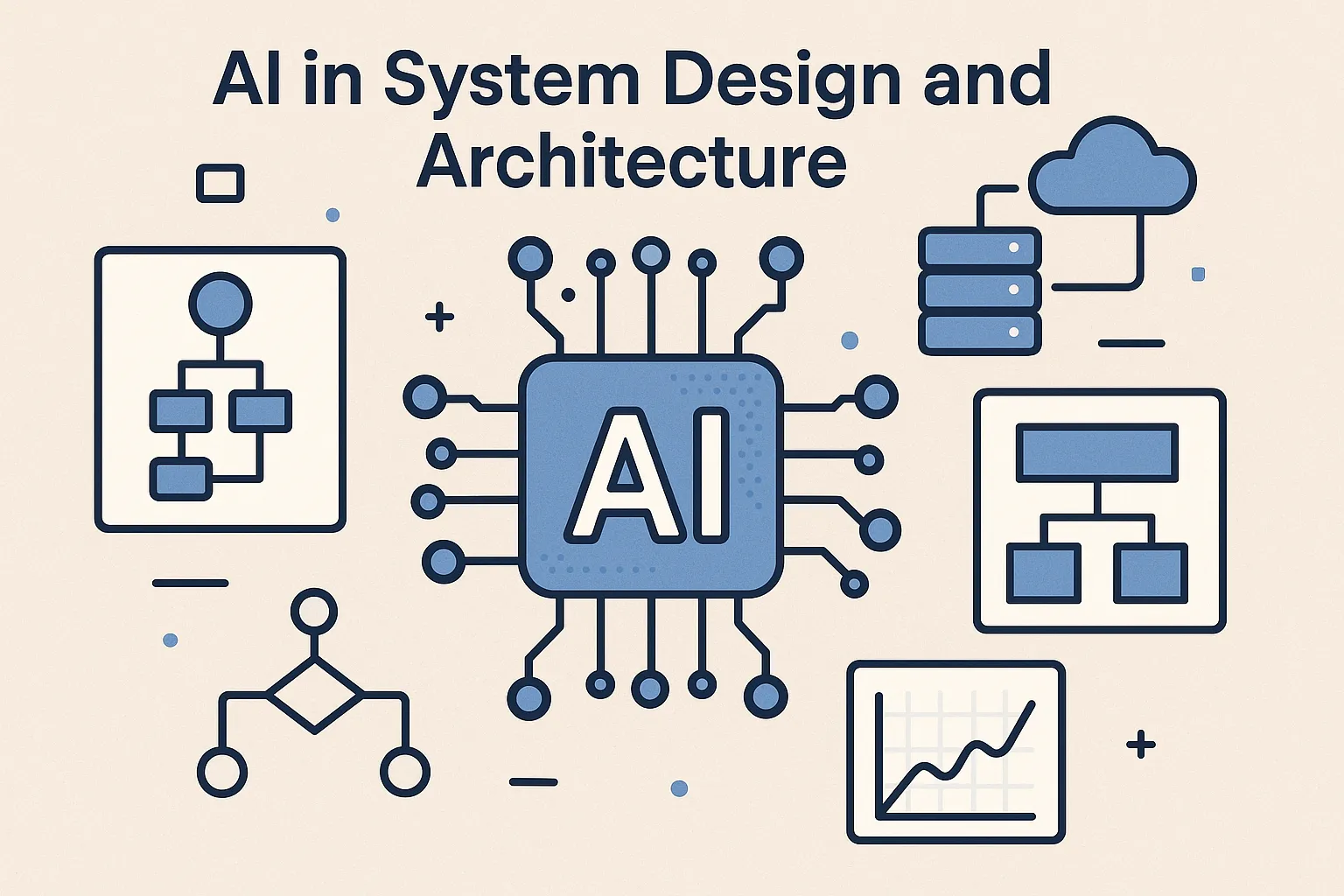The Shifting Foundation of Software Development
In the world of software engineering, system architecture is the bedrock upon which every successful application is built. It dictates how components interact, how data flows, and how the system scales, performs, and withstands failure. For decades, this discipline has been a human-centric endeavor, a blend of experience, established patterns, and painstaking manual effort. Architects would spend countless hours on whiteboards, drafting diagrams, debating trade-offs, and documenting decisions.
However, the complexity of modern software has pushed these traditional methods to their limits. The rise of microservices, distributed systems, serverless computing, and the constant pressure to deliver faster has created an architectural landscape of unprecedented intricacy. A single application may now consist of hundreds of interdependent services, each with its own scaling requirements, data stores, and failure modes. Managing this complexity manually is not just challenging; it is becoming a significant bottleneck to innovation and a primary source of technical debt.
This is where Artificial Intelligence (AI) enters the picture, not as a replacement for human architects, but as a powerful co-pilot. AI is fundamentally changing the way we approach system design, offering tools that can automate tedious tasks, provide data-driven insights, and help us navigate the vast decision space of modern architecture. From generating detailed diagrams from a simple prompt to simulating the performance of a proposed design under load, AI is equipping engineering teams to make faster, smarter, and more resilient architectural decisions.
This article explores the transformative impact of AI on system design and architecture. We will delve into how AI tools assist with critical design decisions, automate the generation of diagrams and documentation, and provide a new layer of analysis for planning robust systems. More importantly, we will discuss how to move beyond ad-hoc experimentation and adopt a strategic approach to integrating these technologies into your development lifecycle.
How AI is Revolutionizing Architectural Planning
The core responsibility of a system architect is to make a series of critical, high-impact decisions that will shape a product for years to come. These decisions involve complex trade-offs between performance, cost, security, and maintainability. AI is emerging as a critical tool for augmenting this decision-making process, providing deeper insights and automating laborious tasks that once consumed a significant portion of an architect’s time.
AI-Assisted Design Decisions and Trade-off Analysis
One of the most significant challenges in architecture is selecting the right patterns and technologies for a given problem. Should you use a monolithic or microservices architecture? A relational database or a NoSQL solution? An event-driven or a request-response communication model? Each choice has profound implications.
AI models can be trained on vast datasets of architectural patterns, case studies, and performance benchmarks. This allows them to function as sophisticated recommendation engines. An architect can input a set of functional and non-functional requirements—such as expected user load, data consistency needs, latency targets, and budget constraints—and an AI tool can suggest a set of viable architectural patterns and technology stacks.
More powerfully, AI excels at trade-off analysis. It can model and simulate the potential outcomes of different architectural choices.
- Performance Prediction: AI can analyze a proposed architecture and predict potential performance bottlenecks before a single line of code is written. By simulating traffic patterns, it can identify which components are likely to come under stress and suggest remedies, such as adding a caching layer or choosing a more scalable database.
- Cost Modeling: Cloud infrastructure costs can be notoriously difficult to predict. AI tools can analyze an architecture and provide detailed cost projections based on different cloud providers and service configurations. They can identify opportunities for optimization, such as recommending more cost-effective instance types or suggesting a serverless approach to reduce idle resource costs.
- Resilience and Fault Tolerance: AI can perform a “virtual chaos engineering” exercise on a proposed design, identifying single points of failure and areas of low resilience. It can suggest patterns for improving fault tolerance, such as implementing circuit breakers, retries, and fallback mechanisms.
By offloading this complex analytical work to AI, architects can focus their expertise on the strategic aspects of the design, confident that their decisions are backed by data-driven models.
Automated Diagram Generation and Living Documentation
Clear, accurate, and up-to-date documentation is essential for any engineering team, yet it is often the first thing to fall behind in the rush to ship features. System diagrams—such as UML diagrams, C4 models, sequence diagrams, and infrastructure diagrams—are particularly difficult to maintain manually.
AI-powered diagramming tools are solving this problem by turning natural language prompts or even existing codebases into polished, accurate diagrams. An engineer can simply describe the system—“Generate a sequence diagram for a user login process that involves an API gateway, an authentication service, and a user database”—and the AI will produce the corresponding visual representation.
The benefits are transformative:
- Speed: What used to take hours of meticulous drawing in a specialized tool can now be generated in seconds. According to the 2025 AI-Enablement Benchmark Report, teams using AI tools for design and architecture have seen a 28% increase in design iteration speed.
- Consistency: AI ensures that all diagrams adhere to a consistent style and notation, improving clarity and communication across the team.
- Living Documentation: By integrating these tools into the development pipeline, diagrams can be automatically updated whenever the codebase changes. This creates “living documentation” that is always in sync with the actual state of the system, eliminating the risk of engineers working from outdated architectural plans.
Architecture Validation and Optimization
Before committing to a design, it’s crucial to validate it against best practices for security, scalability, and maintainability. AI can act as an automated architectural review board, scrutinizing designs for potential issues.
AI tools can be trained on security frameworks and common vulnerabilities to scan an architecture for weaknesses, such as exposed endpoints, improper data handling, or insufficient access controls. They can analyze data flow diagrams to ensure compliance with regulations like GDPR or HIPAA. On the performance front, AI can identify anti-patterns that could lead to poor scalability, such as chatty inter-service communication or inefficient database queries. This proactive validation saves countless hours of remediation work down the line.
The Architect’s Modern Toolkit: AI in Practice
The adoption of AI in system design is not a future concept; it’s happening now. The design and architecture phase of the Software Development Lifecycle (SDLC) has an AI adoption rate of 52%, a clear indicator that engineering teams are recognizing its value. This is a key finding from our research for the 2025 AI-Enablement Benchmark Report.
Leading teams are integrating a new class of AI-powered tools into their workflows to accelerate planning and improve the quality of their architectural output.
Key Tools in the AI-Driven Design Phase
| Tool Category | Popular Examples | Primary Use Case | Reported Impact |
|---|---|---|---|
| Collaborative Whiteboarding | Miro AI, Figma AI | Brainstorming, user flow mapping, and converting unstructured ideas into formal diagrams and wireframes. | Accelerates the transition from concept to tangible design artifacts. |
| Diagram Generation | Diagram GPT | Creating system architecture diagrams (C4, UML, sequence) from natural language prompts or code. | Radically reduces the time spent on manual diagramming and documentation. |
| Requirements Analysis | Notion AI, ChatGPT, Claude | Synthesizing user stories, clarifying ambiguous requirements, and generating technical specifications. | Improves the quality and clarity of inputs into the architecture phase. |
These tools work in concert to create a more fluid and efficient design process. An architect might start by using a large language model like Claude to refine product requirements into a clear technical specification. They could then move to a tool like Miro AI to brainstorm high-level components on a digital whiteboard. Finally, they would use a tool like Diagram GPT to generate the formal, detailed architectural diagrams from their specifications.
This workflow, powered by AI at each step, allows for rapid iteration and feedback. An entire architectural proposal can be conceptualized, documented, and refined in a fraction of the time it would take using traditional methods. The result is not only a faster process but also a more thoroughly considered and well-documented final design.
The MetaCTO Advantage: Partnering for AI-Driven Architecture
Adopting new tools is only the first step. The true challenge—and opportunity—lies in integrating them into a coherent strategy that elevates your team’s capabilities. Simply giving developers access to AI tools without a framework often leads to inconsistent usage, unmeasured impact, and what we call “AI code chaos.” This is where an experienced partner can make all the difference.
At MetaCTO, we offer Ai Development services to bring AI technology into businesses, making every process faster, better, and smarter. With over two decades of experience and more than 100 apps launched, we have a deep understanding of what it takes to build successful, scalable software. Our experience integrating AI technologies is not theoretical; it’s proven in the real world. We implemented cutting-edge computer vision AI for the G-Sight app and developed the Parrot Club app with sophisticated AI transcription and correction capabilities.
Hiring an agency like ours provides you with more than just development resources; it gives you a strategic partner to guide your AI adoption journey. System design is the single most critical phase for the long-term health of a project. Mistakes made here are exponentially more expensive to fix later. Our expertise ensures you get this foundational stage right. For teams that may have already started down a problematic path, our Vibe Code Rescue service is designed specifically to turn AI code chaos into a solid foundation for growth.
We have codified our expertise into the AI-Enabled Engineering Maturity Index (AEMI), a strategic framework we use to assess a team’s current AI capabilities and build a clear roadmap for advancement. Most teams start at a “Reactive” or “Experimental” level, where AI usage is ad-hoc and its benefits are anecdotal. We help organizations move to “Intentional” and “Strategic” levels, where AI is systematically integrated across the SDLC—including design and architecture—and its impact is measured and optimized. This structured approach ensures that your investment in AI translates directly into tangible improvements in productivity, quality, and speed to market.
Conclusion: Building the Future, Intelligently
The discipline of system design is undergoing a profound transformation. The immense complexity of modern applications requires a new class of tools, and AI is stepping in to fill that need. By assisting with complex design decisions, automating the once-tedious task of diagramming and documentation, and providing a powerful layer of automated validation, AI is empowering architects and engineers to build more resilient, scalable, and efficient systems than ever before.
We have explored how AI acts as a co-pilot, handling the heavy analytical lifting and allowing human experts to focus on strategic innovation. We have also seen the tangible impact of these tools, with teams reporting significant gains in design iteration speed and overall productivity.
However, harnessing this power requires more than just subscribing to a new tool. It requires a deliberate strategy and a deep understanding of how to integrate AI into your team’s unique workflow. An expert partner can provide the guidance needed to navigate this shift, ensuring that your architectural foundation is not just solid, but intelligent. By leveraging a structured framework for AI adoption, you can ensure that your team is building not just for today’s requirements, but for the challenges of tomorrow.
If you are ready to build your next application on a resilient, future-proof foundation, let’s talk. Talk with an AI app development expert at MetaCTO to discover how we can help you leverage AI for superior system design and architecture.

